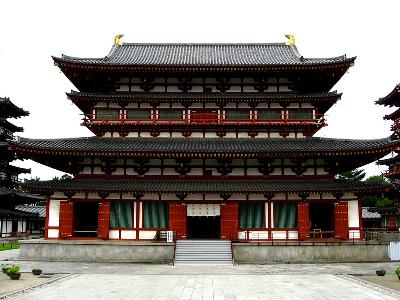|
Himure Hachimangu Shrine in Miyauchi Town in Omihachiman City, Shiga Prefecture, is a historic shrine visited by a lot of historical figures. It is said that the shrine was founded by Takenouchi no Sukune by the order of the 13th emperor Seimu in 131, when Seimu ascended the throne at Takaanaho Palace.
It was given the present name by the 15th emperor Ojin when he traveled to Omi province and his tentative palace was set up at this shrine. As the emperor saw double rings around the sun, he ordered to build a shrine hall here and named Himure no Yashiro Hachimangu Shrine, which means Sun Gathering Shrine.
Later during the reign of Empress Jito (690-697), the shrine was renamed Himure Shrine after the poem written by Fujiwara no Fuhito when he visited this shrine. According to one theory, the name “Himure” was derived from Hifure no Omi, the founder of the Wani clan, which ruled the northern part of Nara Basin from the 5th to 6th centuries.
As the shrine housing Homutawake no Mikoto, the god of war, it was visited by many powerful warrior clans including the Ashikaga and the Tokugawa clans. At the time of the Mongol Invasions of Japan, the Japanese Imperial court presented heihaku (offerings) to the shrine. After the Battle of Sekigahara, Tokugawa Ieyasu also visited this shrine.
In 1966, the shrine was renamed Himure Hachimangu Shrine. A lot of important cultural properties are preserved in the repository.
It was given the present name by the 15th emperor Ojin when he traveled to Omi province and his tentative palace was set up at this shrine. As the emperor saw double rings around the sun, he ordered to build a shrine hall here and named Himure no Yashiro Hachimangu Shrine, which means Sun Gathering Shrine.
Later during the reign of Empress Jito (690-697), the shrine was renamed Himure Shrine after the poem written by Fujiwara no Fuhito when he visited this shrine. According to one theory, the name “Himure” was derived from Hifure no Omi, the founder of the Wani clan, which ruled the northern part of Nara Basin from the 5th to 6th centuries.
As the shrine housing Homutawake no Mikoto, the god of war, it was visited by many powerful warrior clans including the Ashikaga and the Tokugawa clans. At the time of the Mongol Invasions of Japan, the Japanese Imperial court presented heihaku (offerings) to the shrine. After the Battle of Sekigahara, Tokugawa Ieyasu also visited this shrine.
In 1966, the shrine was renamed Himure Hachimangu Shrine. A lot of important cultural properties are preserved in the repository.
| [+ADDRESS] | 
|















